This Hotel in Puerto Vallarta Is Rescuing Baby Sea Turtles — and Guests Can Help Release Them Into the Wild
It was dark, the moon and a few muffled flashlights the only sources of light.
I knelt down in the sand, hiking my dress up, and reached down to grab a soft egg the size of a ping-pong ball. I gently pulled it up and placed it next to a pile of others. It was near midnight and we were collecting the eggs from underneath an olive ridley sea turtle who had slowly dragged herself from the ocean to lay her eggs one recent fall evening on the beach in Puerto Vallarta, on the western coast of Mexico. She was the second one we had found that night.
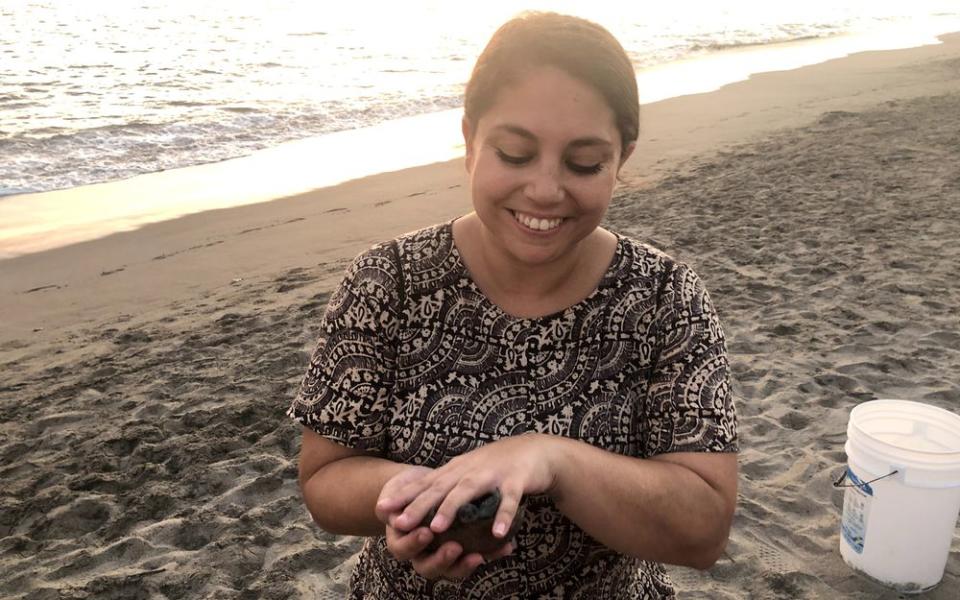
“Just call me a turtle labor and delivery nurse,” I joked, reaching down to get more eggs as the turtle continued to lay them, biologist Carlos Bautista trying to hide his amusement over how much of a novice I was.
Minutes passed, and the turtle started swiveling her back legs, stomping on the sand in what Bautista called “the dance of the sea turtle,” a sort of merengue meant to bury and protect her little ones.
Bautista helms the Sea Turtle Rescue Program at the Marriott Puerto Vallarta Resort & Spa, which started in 2005 and now releases an average of 60,000 baby turtles every season. The nursery can hold up to 500 turtles at once, with each taking about 45 days to hatch.
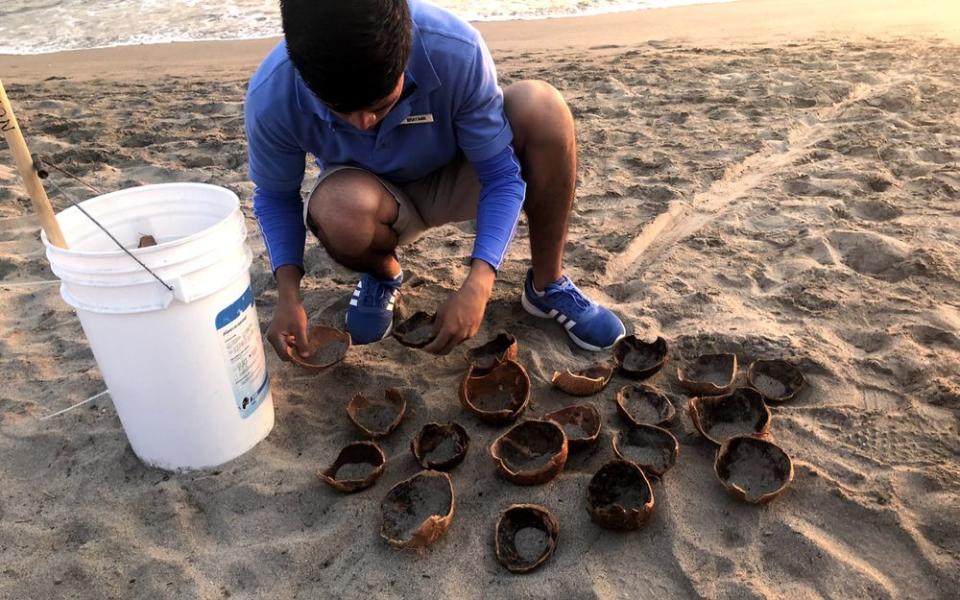
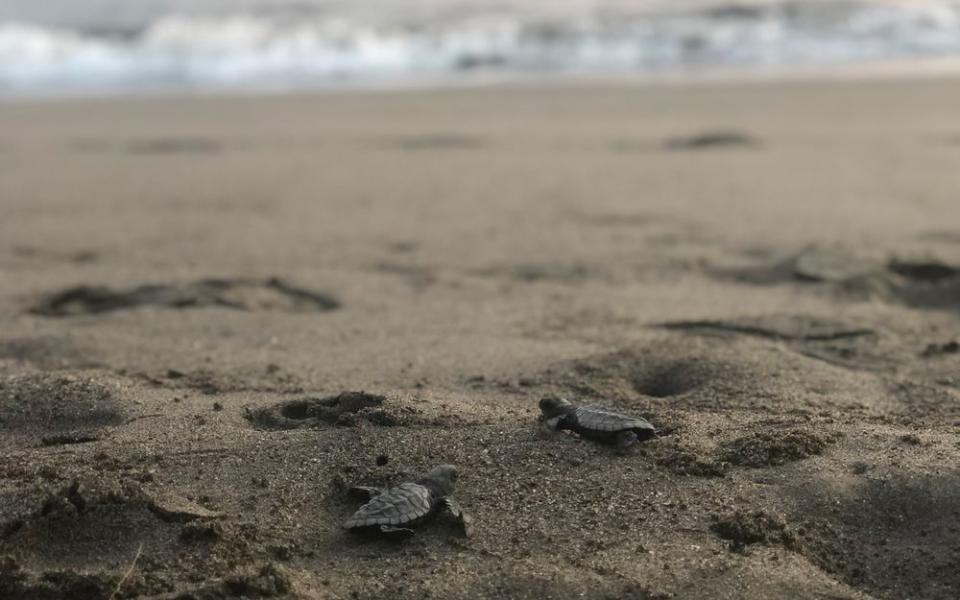
Just a few miles down the beach, the pulse of all-night bars and the constant thrum of the bustling Malecón boardwalk hummed with energy. But here, all was quiet. Bautista continued his nightly patrol while much of the resort slept, just as he did each night during turtle season from June to December. He patiently combed the beach, looking for the tell-tale tracks and flattened areas where a turtle may have hid her nest.
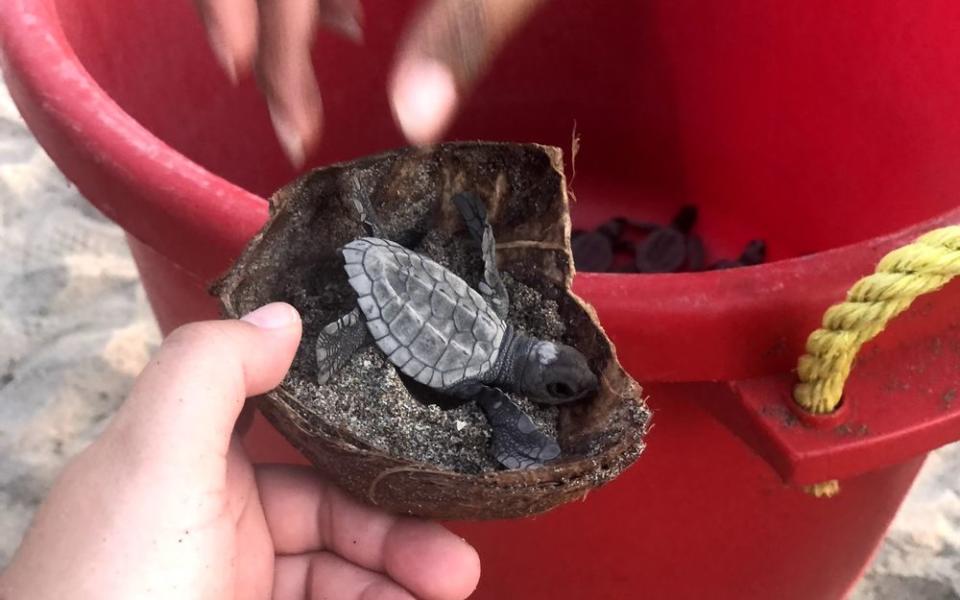
While hotel guests aren’t typically able to help patrol the beach in the middle of the night, the resort does encourage them to get involved by helping to release the turtles whenever mother nature allows.
They may hatch every day, every week. “Some things cannot be rushed,” Cristina Hernández Quintana, the hotel’s public relations and marketing manager, knowingly told me.
Sea turtles are classified as vulnerable, facing risks like habitat destruction and being accidentally caught in fishing gear, according to the World Wildlife Fund. When they hatch on the beach without any help, they face natural predators like birds, raccoons, crocodiles, and cats. But sea turtles are an integral part of the environment and programs like the one Bautista heads up are helping to save them.
%image1
As of November, Bautista had collected more than 570 nests. The resort is one of about 15 nurseries in the area doing so.
“Biologically, the sea turtle can moderate the jellyfish population and the coral reef… it’s so important for the ecosystem,” Bautista told me as we stood outside the hotel’s nursery that night, a quiet refuge for the animals just around the corner from the infinity pool where hours earlier sunbathers lounged in half-submerged chairs, making the most of Puerto Vallarta’s near-perfect weather.
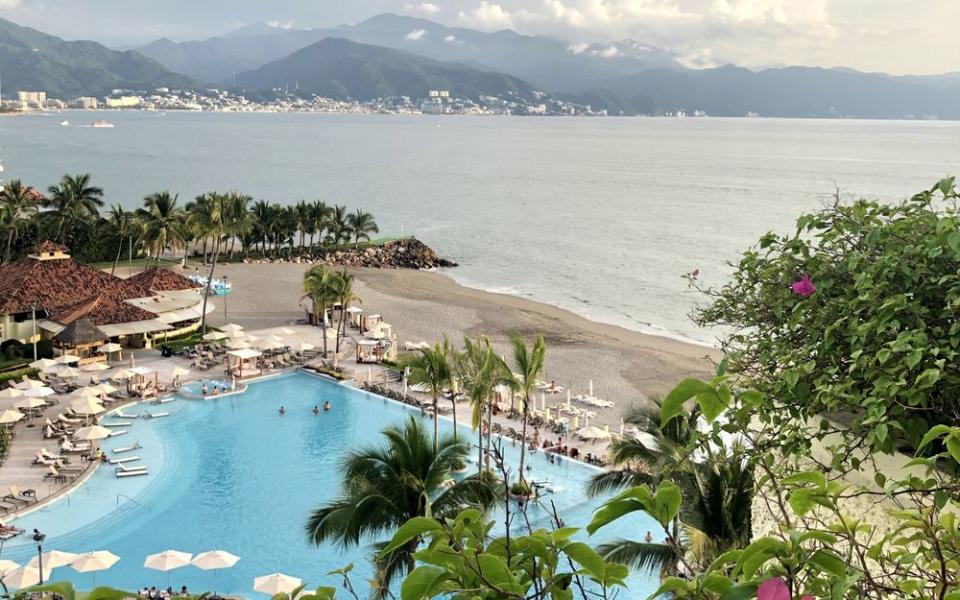
Bautista started to pile tiny sea turtle after tiny sea turtle into a large bucket, counting as he went — 50… 128... 186 in total — ready to bring them down to the water’s edge and send them on their way. The baby turtles, he explained, had to be released within hours of hatching.
The hotel releases the turtles at certain times, just one measure to protect them from things like prying birds that could try to pick them off. In the daytime, that means before 11 a.m. or at sunset as the angle of the sun helps to shield them.
Earlier that day, the sun had cast a deep orange-red glow, turning the fine sand a warm bronze as glistening waves gently lapped at the shore. It was a perfect sunset, the kind Puerto Vallarta prides itself on. And about 100 people — kids, adults, and even a baby — had lined up along the beach, each handed a dried coconut shell cut in half with a small sea turtle gently placed inside.
As the sun started to dip lower, the nearby mountains that hugged the Bay of Banderas darkened against the sky. The hotel’s staff drew a line in the sand, the kind reminiscent of the start line for a race, and off they went. The group cheered as each of the turtles made their way down to the water, allowing the waves to whisk them away to whatever lives awaited them in the depths below.
“Every time one kid touches a turtle or sees a turtle, they get fond of the turtle and they want to protect them.” Bautista said. “As a biologist, I have a mission to [educate] children... to be the generation that saves the world.”
They’d be back, of course. Sea turtles famously return to the same beach they were born 10 to 12 years later. While I don’t know exactly when the turtles we sent off into the world will return, I do know the tequila flights, colorful flea markets selling lace dresses and rattan beach bags, and charming cobblestone streets of Puerto Vallarta will surely be calling my name before a decade has passed.

